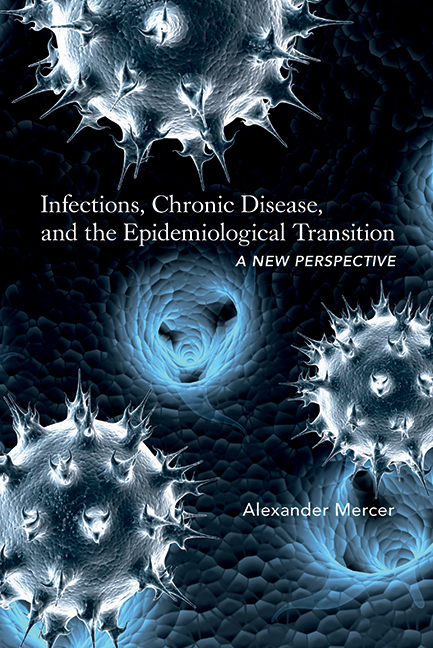Book contents
- Frontmatter
- Dedication
- Contents
- Preface
- Acknowledgments
- Introduction
- 1 Background
- 2 Theoretical Framework, Data, and Study Outline: The Concept of Epidemiological Transition
- 3 A New Infectious Disease Environment
- 4 Mortality Decline, Food, and Population Growth: “Standard of Living” and Nutrition
- 5 Smallpox
- 6 Typhus, Typhoid, Cholera, Diarrhea, and Dysentery
- 7 Infant Mortality
- 8 Child Mortality
- 9 Tuberculosis
- 10 Respiratory Diseases
- 11 Cardiovascular Disease
- 12 Cancer
- 13 Other Chronic Diseases
- 14 Epidemiological Transition: A New Perspective
- Appendixes
Introduction
Published online by Cambridge University Press: 14 March 2018
- Frontmatter
- Dedication
- Contents
- Preface
- Acknowledgments
- Introduction
- 1 Background
- 2 Theoretical Framework, Data, and Study Outline: The Concept of Epidemiological Transition
- 3 A New Infectious Disease Environment
- 4 Mortality Decline, Food, and Population Growth: “Standard of Living” and Nutrition
- 5 Smallpox
- 6 Typhus, Typhoid, Cholera, Diarrhea, and Dysentery
- 7 Infant Mortality
- 8 Child Mortality
- 9 Tuberculosis
- 10 Respiratory Diseases
- 11 Cardiovascular Disease
- 12 Cancer
- 13 Other Chronic Diseases
- 14 Epidemiological Transition: A New Perspective
- Appendixes
Summary
The decline in mortality from infectious diseases has been one of the most significant changes in human history leading to unprecedented increases in life expectancy. There is an expectation in industrialized countries that almost all children will grow up to adulthood and that most people will live at least eighty years despite the high incidence of chronic diseases. Heart disease, stroke, cancers, diabetes mellitus, ulcers, diseases of the kidneys and liver, and other chronic diseases cause much debility, long-term sickness, and “premature” death, which to some extent detracts from the sense of progress in health that has come with the control of infectious diseases. The epidemic diseases that caused high mortality in the 18th and 19th centuries generally resulted in acute short-term sickness, which was often fatal, particularly in the early years of life, while the major chronic infectious disease, tuberculosis, caused high mortality among adults. Infectious diseases restricted average life expectancy to 30–40 years in England and other European countries. A change in the predominant causes of morbidity and mortality from acute infectious diseases and tuberculosis to other chronic diseases among adults, concomitant with increasing life expectancy and a higher proportion of older people in the population, characterizes the epidemiological transition. This term distinguishes the process from Abdel Omran's original concept, “epidemiologic transition,” which included phases and models of change. Inadequate definition of disease categories, lack of consideration of disease etiology, and other aspects of Omran's theory have been criticized, and many refinements have been made. Nevertheless, the basic concept of epidemiological transition is widely accepted as a framework for analysis of long-term changes in disease and mortality.
A major objective of this study is to review the emergence of chronic diseases, the now predominant causes of death in industrialized countries, in the context of dramatic changes in the infectious disease environment. The study focuses on the epidemiological transition that occurred in England from the 18th century onward. This is distinct from an earlier change in the predominant infectious diseases when humans first began to live in settled communities during the “Neolithic Revolution,” and a further phase of the global transition in which new infectious diseases have emerged and old ones have reemerged as a threat in recent decades, mostly as a result of human action.
Information
- Type
- Chapter
- Information
- Infections, Chronic Disease, and the Epidemiological TransitionA New Perspective, pp. 1 - 7Publisher: Boydell & BrewerPrint publication year: 2014
